SACRAMENTO -- When Berkeley biologist Chris Conroy and colleagues went looking in Yosemite for the alpine and shadow chipmunks, they had trouble finding mammals that an earlier generation of Berkeley scientists found everywhere in the park.
The California pocket mouse, ordinarily making its home in chaparral, was found 2,000 feet higher than where it was 90 years ago. Scientists likewise had to hike 1,000 feet higher to find the wood rat and California vole.
The pinon mouse, typically found on dry, eastern Sierra slopes and never in Yosemite, today is found all over the park, along with another new arrival, the harvest mouse.
Something is rearranging California's flora and fauna, and climatic shifts are topping the list of explanations. Sierra snows are melting one to three weeks earlier than historically, ushering in an early spring and drier soils and forests, particularly at middle elevations.
For the better part, that's where climate researcher Anthony Westerling has found an explosion in wildfires across the American West. The number of wildfires has quadrupled in the last 17 years and the burned acreage has swelled almost seven times over, mostly at middle elevations.
"There's a really strong correlation here between temperature and forest fires, and it really picked up since the late 1980s," Westerling said Friday in Sacramento at the California Energy Commission's third annual conference on climate change.
For now, the greatest wildfire risk in California is on the southern coast and in the southern Sierra foothills. But every computer simulation of greenhouse-gas warming shows higher fire risk in California, and the greatest increase in risk is in Northern California, Westerling said.
If the rate of fossil fuel burning continues to accelerate at its current pace, the greatest probability for large property losses shifts to the Sierra foothills northwest of Sacramento, he said.
Whether there will be forests to burn there is another question. Ponderosa pines in the northern Sierra foothills are getting harder to find where scientists mapped them in the 1930s.
Jim Thorne, an environmental science researcher at the University of California, Davis, compared the latest vegetation maps with ones made by Berkeley scientists in the 1930s and '40s. In Eldorado County, he found, the forests have shifted 16 miles toward the mountains and more than 1,700 feet higher, climbing three meters a year on average since the '30s.
"I think a lot of this might be due to climate change," Thorne said Friday.
Ordinary wildfires are claiming the trees, but Thorne said he suspects the replacement seedlings are encountering warmer, drought- like conditions and failing. Those warmer conditions are apparent when Thorne looks at monthly minimum temperatures in the foothills, which usually are nighttime cools.
In the early '80s, those average minimums for Lake Tahoe in May and October rose above freezing and never have come back down.
In Yosemite Valley, the coolest temperatures in November, March and April went past freezing in or before 1990 and haven't come back.
Winter in Placerville no longer is reliably white. Nighttime temperatures in December, January and February have averaged above freezing since the early 1990s.
"There are no longer any months at Placerville that remain frozen," said Thorne.
The changes aren't unique to winter. During last summer's heat wave, nighttime in Fresno brought virtually no relief, with temperatures staying as high as 90. That makes sense for southern desert places like Needles and Death Valley, but not the Central Valley, said Kelly Redmond, director of the Western Regional Climate Center in Reno.
"That's just way beyond what I would have expected to see," Redmond said. "And we're seeing it all over the West."

















 Trumpet Gentian is a beautiful spring species producing large, upturned trumpets of brilliant deep blue over a mat of glossy, dark-green lance-shaped foliage. The trumpets are spotted green inside and the flowers have metallic flakes in their petals. Height is only 5-8 cm. It is an evergreen, mat-forming species which spreads outward by a slow increase in its rosettes. These are easy to pull apart into separate rooted sections and be replanted separately, once the need for division arrives after 3-4 years. Flowering is normally late spring to early summer.
Trumpet Gentian is a beautiful spring species producing large, upturned trumpets of brilliant deep blue over a mat of glossy, dark-green lance-shaped foliage. The trumpets are spotted green inside and the flowers have metallic flakes in their petals. Height is only 5-8 cm. It is an evergreen, mat-forming species which spreads outward by a slow increase in its rosettes. These are easy to pull apart into separate rooted sections and be replanted separately, once the need for division arrives after 3-4 years. Flowering is normally late spring to early summer.



 wers are seldom seen as they are found right at the top of the older trees. They ripen into pale brown, blunt and domed cones. The thin, hard, crinkled scales of the cones protect the seeds inside.
wers are seldom seen as they are found right at the top of the older trees. They ripen into pale brown, blunt and domed cones. The thin, hard, crinkled scales of the cones protect the seeds inside. 


 When the tree is in its full bloom, the pale greens and multicoloured bunches of flowers stand out to relieve our eyes from the dense darkness of the jungle. The bark of the tree is grey and smooth and also squared with polish and cream. The tree is broad-leafed but the leaves fall so slow and steadily that it rarely becomes bare. The large and vertical pyramids of flowers appear in the Summer. Varying from trees to trees, they change their colours. In some trees they are of purple colour, in some others they are mauve. Sometimes, they take a pretty pinky-mauve colour while sometimes they also take the definite pink colour. They even become white in some special occasions. Usually, the new flowers contain a deeper colour, but the older or aged ones become fade and sometimes almost white by the course of time. The various shades of the flowers scatter along the sprays and give them
When the tree is in its full bloom, the pale greens and multicoloured bunches of flowers stand out to relieve our eyes from the dense darkness of the jungle. The bark of the tree is grey and smooth and also squared with polish and cream. The tree is broad-leafed but the leaves fall so slow and steadily that it rarely becomes bare. The large and vertical pyramids of flowers appear in the Summer. Varying from trees to trees, they change their colours. In some trees they are of purple colour, in some others they are mauve. Sometimes, they take a pretty pinky-mauve colour while sometimes they also take the definite pink colour. They even become white in some special occasions. Usually, the new flowers contain a deeper colour, but the older or aged ones become fade and sometimes almost white by the course of time. The various shades of the flowers scatter along the sprays and give them  a charming appearance. At the end, the buds are soft bluish-green. They also have a touch of pink in them. The wavy sepals give them the look of the velvet jugs. Inside the flowers, six or seven of the sepals are very soft green in colour and they are revealed between the slim bases of the petals. These petals are very uneven and wrinkled and this is why the tree acquired its other name, the `Crepe Flower`. The whole flower calculates around 6.3 cm across and it has some yellow dotted stamens and also a long style that radiate from the centre. When the flowering season is over, the numerous fruits form, sitting like little green crab apples in the wasted calices. In the later part of the year, they turn black and remain in the tree for almost the rest of the year along with the next flowering and fruiting season.
a charming appearance. At the end, the buds are soft bluish-green. They also have a touch of pink in them. The wavy sepals give them the look of the velvet jugs. Inside the flowers, six or seven of the sepals are very soft green in colour and they are revealed between the slim bases of the petals. These petals are very uneven and wrinkled and this is why the tree acquired its other name, the `Crepe Flower`. The whole flower calculates around 6.3 cm across and it has some yellow dotted stamens and also a long style that radiate from the centre. When the flowering season is over, the numerous fruits form, sitting like little green crab apples in the wasted calices. In the later part of the year, they turn black and remain in the tree for almost the rest of the year along with the next flowering and fruiting season.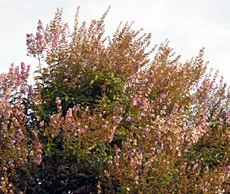 Normally, the leaves of the tree grow alternating each other and sometimes in nearly making a pair. They also grow in all the directions of the branches. They are bright green in colour and a little pale below. Being heavily veined on the underside, each leaf is a smooth and pointed oval that measures from 12.5 to 20 cm in length and grows from a short stalk. Sometimes, they turn an eye-catching coppery shade just before they fall down in the Winter. They also give the tree a temporary charm provided the insects don`t disfigure them.
Normally, the leaves of the tree grow alternating each other and sometimes in nearly making a pair. They also grow in all the directions of the branches. They are bright green in colour and a little pale below. Being heavily veined on the underside, each leaf is a smooth and pointed oval that measures from 12.5 to 20 cm in length and grows from a short stalk. Sometimes, they turn an eye-catching coppery shade just before they fall down in the Winter. They also give the tree a temporary charm provided the insects don`t disfigure them.







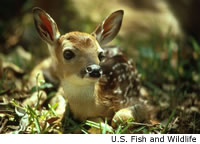
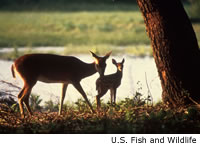
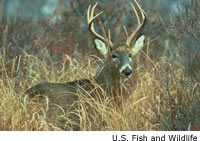
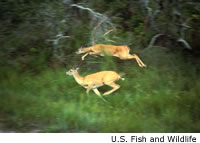
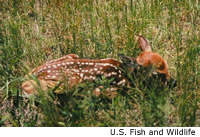

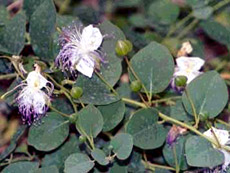 Commercial European capers are the pickled flower buds of the plant. They have an acrid, burning taste, and are considered useful in scurvy. In India, the buds and also the fruits, are similarly taken.
Commercial European capers are the pickled flower buds of the plant. They have an acrid, burning taste, and are considered useful in scurvy. In India, the buds and also the fruits, are similarly taken.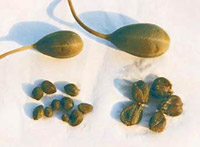 Caper seeds yield 34 to 36% of a pale yellow oil. Its Iodine value reported to be 115 to 125. It is basically a unsaturated oil, with fatty acid composition as given below:
Caper seeds yield 34 to 36% of a pale yellow oil. Its Iodine value reported to be 115 to 125. It is basically a unsaturated oil, with fatty acid composition as given below: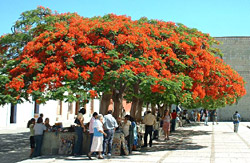 The Gul Mohr is amongst those rare trees in India that are extra-ordinarily striking and ornamental. When the month of April comes, everyone just wonder about thinking how a bare, skinny tree that is standing on a dry and hard earth can create such a glorious wealth of bloom. Just a few days after the first blossom appears, the whole tree starts shining with various splashes of crimson and orange. In the Month of May, the soft, whitish, rich green of the new plants spread out and the tree develops a light and soft beauty. The long ugly, black pods and bare, gray branches stays hidden and the spreading sunshade of green lace and cherry blossoms get the loveliest beauty. There is always a rich variety in the shades of crimson and cherry. Some trees become almost orange and some other take a deep red shade. All the variety of colour has their respective admirers.
The Gul Mohr is amongst those rare trees in India that are extra-ordinarily striking and ornamental. When the month of April comes, everyone just wonder about thinking how a bare, skinny tree that is standing on a dry and hard earth can create such a glorious wealth of bloom. Just a few days after the first blossom appears, the whole tree starts shining with various splashes of crimson and orange. In the Month of May, the soft, whitish, rich green of the new plants spread out and the tree develops a light and soft beauty. The long ugly, black pods and bare, gray branches stays hidden and the spreading sunshade of green lace and cherry blossoms get the loveliest beauty. There is always a rich variety in the shades of crimson and cherry. Some trees become almost orange and some other take a deep red shade. All the variety of colour has their respective admirers. The usual size of the Gul Mohr flower is 12.5 cm across. The large ones put up with numerous, combination of blooms and roundish drowsy buds. The design of the flower is somewhat uncommon. Five thick crimson sepals curve back and display their lime-green lining and bright yellow rims from the spaces between them. If you spread out the five spoon-shaped, curvy and crinkle-edged petals you will find one of them is larger. Its-white or yellow center splashes with scarlet. Ten long stamens spread and curve from the center. After the fall of the flowers the soft, green pods make their appearance. But soon they become hard and black, they are the long ugly straps hanging amongst the leaves. They wait there throughout the year for the next year`s flowers to appear. These leaves are just like those of several other trees.
The usual size of the Gul Mohr flower is 12.5 cm across. The large ones put up with numerous, combination of blooms and roundish drowsy buds. The design of the flower is somewhat uncommon. Five thick crimson sepals curve back and display their lime-green lining and bright yellow rims from the spaces between them. If you spread out the five spoon-shaped, curvy and crinkle-edged petals you will find one of them is larger. Its-white or yellow center splashes with scarlet. Ten long stamens spread and curve from the center. After the fall of the flowers the soft, green pods make their appearance. But soon they become hard and black, they are the long ugly straps hanging amongst the leaves. They wait there throughout the year for the next year`s flowers to appear. These leaves are just like those of several other trees. Another very interesting thing about Gul Mohr is that one can very easily recognize it even when there is no flower in it. Because of its smooth, gray limbs and the characteristic formation of outward spreading branches and leaves, it becomes easily recognizable. Gul Mohrs are some excellent light-shade trees that can grow up to about 12m. People normally plant them in such avenues where most of the trees are of same height and there they form a superb landscape. The advantage of the trees is that they grow readily from seed, although they often take a long time to germinate. As a garden tree it has some disadvantages as well. That are the limbs of these trees break easily in strong winds and that grass and other plants do not grow well beneath it.
Another very interesting thing about Gul Mohr is that one can very easily recognize it even when there is no flower in it. Because of its smooth, gray limbs and the characteristic formation of outward spreading branches and leaves, it becomes easily recognizable. Gul Mohrs are some excellent light-shade trees that can grow up to about 12m. People normally plant them in such avenues where most of the trees are of same height and there they form a superb landscape. The advantage of the trees is that they grow readily from seed, although they often take a long time to germinate. As a garden tree it has some disadvantages as well. That are the limbs of these trees break easily in strong winds and that grass and other plants do not grow well beneath it.

